10/03/2023
The URV has set up nesting boxes to promote urban biodiversity and created small green spaces on its campuses
The World Health Organization credits green spaces with benefits for humans such as reducing stress and cardiovascular diseases, while mitigating the heat island effect
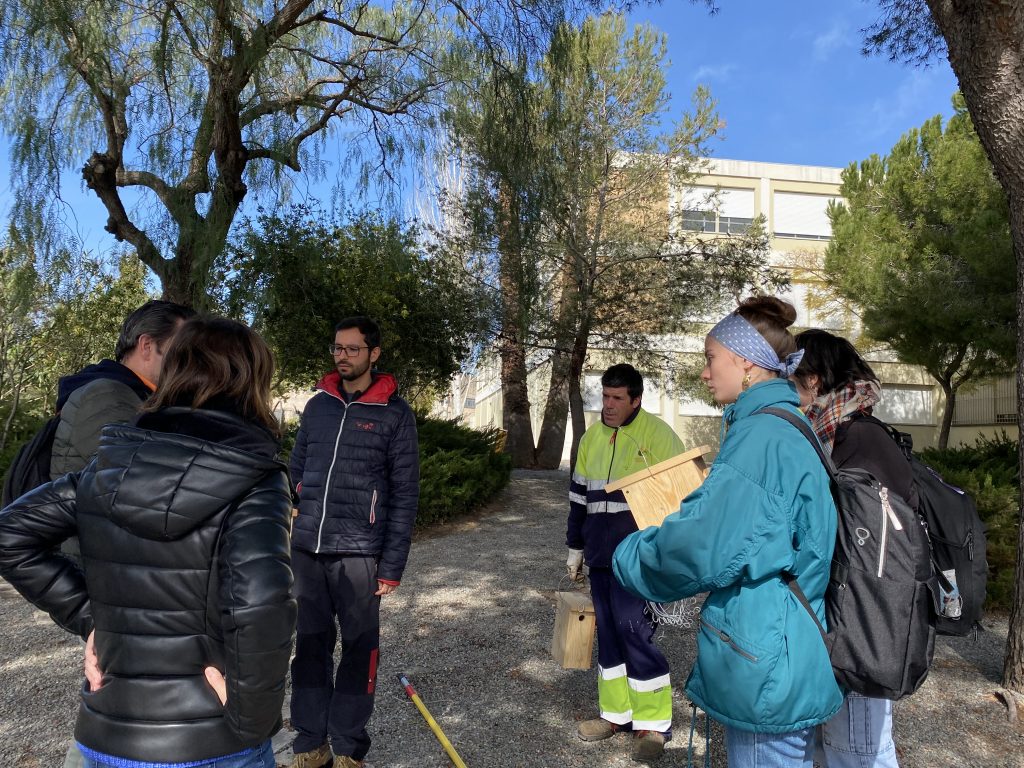
The World Health Organization credits green spaces with benefits for humans such as reducing stress and cardiovascular diseases, while mitigating the heat island effect
The World Health Organization (WHO) published the paper Green space and mortality in European cities: a health impact assessment study
in October 2021. According to the study, green spaces in cities that are open to the public are associated with higher levels of physical activity, interaction, social cohesion and psychological recovery, such as stress reduction and improved attention. They are also associated with improved health, general well-being and a reduction in cardiovascular diseases. Larger parks and green spaces mitigate harmful exposures to, for example, air pollution, noise and the urban heat island effect (that is to say, temperatures are higher at the centre of urban areas than on the periphery).
The WHO recommends that there should be between 10 and 15 m² of green surface area per inhabitant in cities and that the inhabitants should have a green space less than 300 metres from where they live, since these spaces reduce the temperature, purify the air and fix CO2. For this reason, the WHO urges that urban areas be reclaimed: old industrial areas should be converted into urban parks, green roofs or vertical gardens installed, roads and parking spaces changed to green and natural environments and more trees planted on the streets to create green corridors and mini parks.
Green spaces and biodiversity at the URV
This is the scenario that frames the activity and workshops of the Environment Area of the Office of Social Engagement, which has been working since 2017 to create green spaces at the university to mitigate the heat island effect and favour urban biodiversity.
The most recent initiative has been to install wooden boxes in the trees on the campuses so that great tits can make their nests there in the mating season. “The idea is to make it easier for the birds to return to our gardens and be with us on a daily basis. It has a touch of romanticism, but many studies reinforce the idea that green campuses are psychologically healthier for their students,” argues Antonio de la Torre, the URV environmental technician who drafted the Environmental Sustainability and Climate Action Plan that was approved by the Governing Council and organized these workshops.

Birds tend to use holes in trees to make their nests. They usually do this in the oldest trees in the most mature forests, explains Àlex Benítez, from the Aurora Association, a work centre specializing in recovering natural spaces and taking an active part in this workshop. The problem is that with climate change and the increase in the number of fires, there are fewer and fewer mature forests, which creates problems for the birds, who cannot find places to make their nests. “Nesting boxes are a refuge for birds that have no place to breed,” says Benítez.
Once the breeding season is over, these nesting boxes will be checked to see if they have worked and if the birds have found a place to nest and return to the cities.
Evolution of the University’s green spaces
The current green spaces can be traced back to the green wall that was constructed in 2012 on the west facade of the Faculty of Business and Economics. This wall, apart from contributing to the creation of green areas, protects the interior spaces from solar radiation during the afternoons of the hot months and allows natural light to filter through during the colder months.
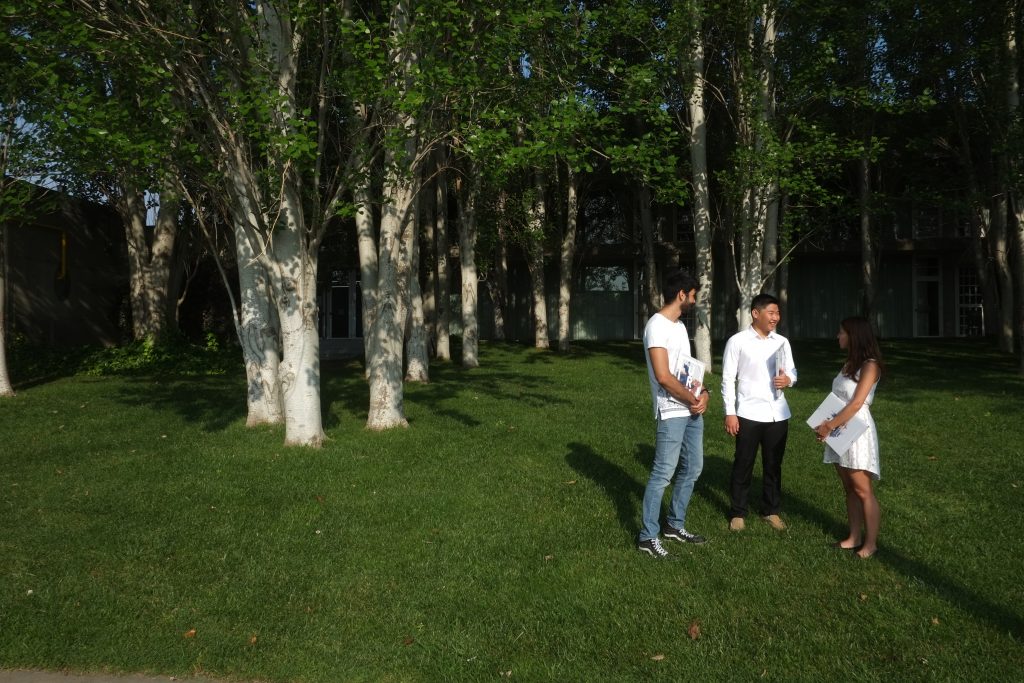
In 2018, a butterfly garden was set up on the Sescelades campus, in front of the main entrance to the CRAI with an area of 150 m². It was designed to promote the presence and reproduction of pollinators on campus and its aim is to bring nature back to an urban space. The project has now been included as a chapter in the book Biodiversidad urbana: de los problemas socioambientales a la práctica educativa, published by the Universidad Autónoma de Madrid (UAM). In this chapter, Antonio de la Torre and the lecturer from the Department of Biochemistry and Biotechnology, Maite Novo, describe the URV’s butterfly garden, which has native plants that attract twenty species of Mediterranean butterflies, enables them to lay their eggs and favours the growth of caterpillars. It is also the annual setting for the Science Fair, in which students from the Bachelor’s Degree in Primary Education prepare experimental activities for students in the first stage of primary education from three different schools.
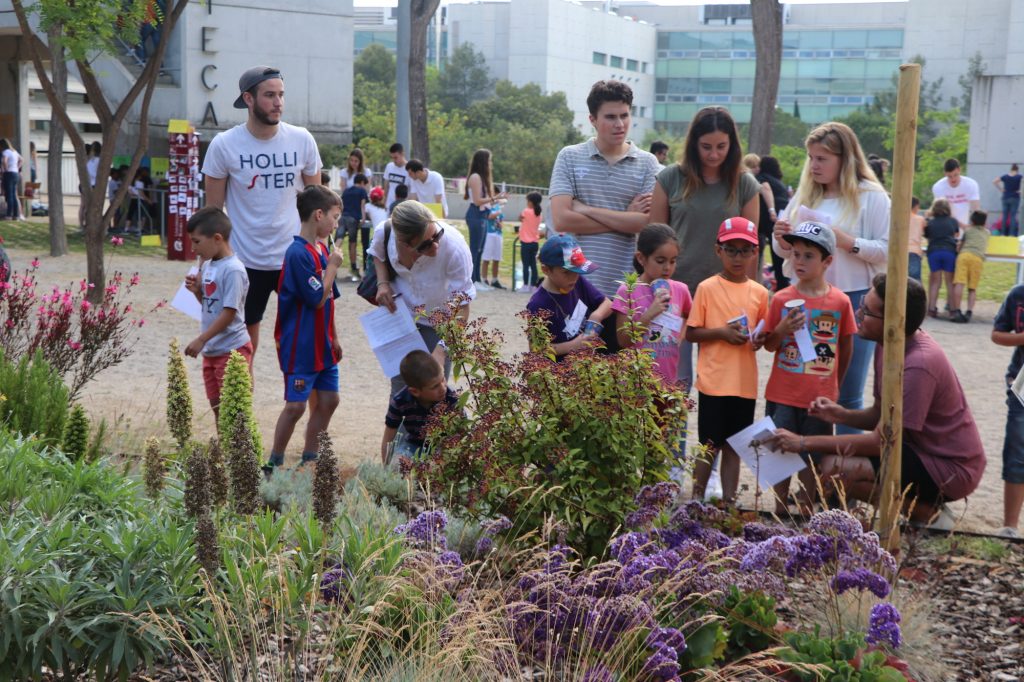
Subsequently, the biodiversity garden was set up on the Bellissens Campus. It was constructed between 2019 and 2021 with a surface area of 240 m2 to attract pollenisers and bring back the colony of Iberian wall lizards to the campus (Podarcis hispanicus). In the future, the idea is also for the hedgehog population on campus to recover. On the perimeter of the campus in Reus, resistant species of trees have been planted that have blossom and fruit that attract birds and pollenisers.
There have also been modifications to the landscaping of the perimeter of the W0 building of the Faculty of Education and Psychology (FCEP), over a combined surface area of 400 m², in an attempt to attract pollinators and the Iberian lizard.
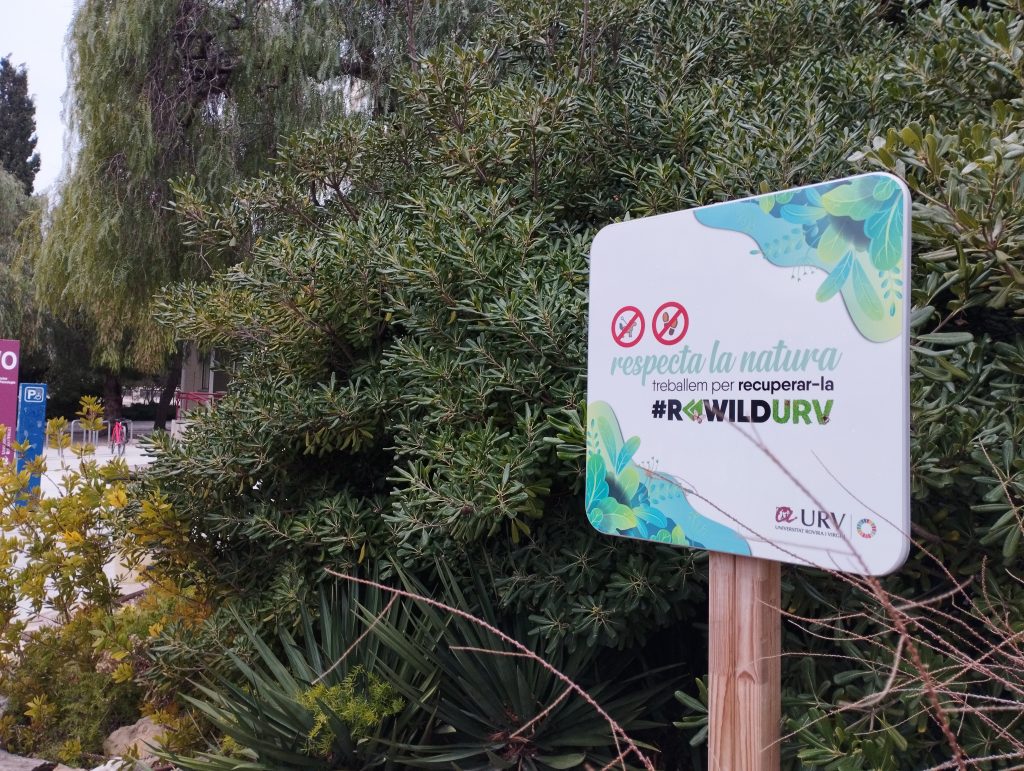
Finally, this week the “Posa-hi verd” (“Make it Green”) campaign has been launched. Plants have been placed in the study areas of the CRAI to make them more welcoming and make the interior spaces greener.
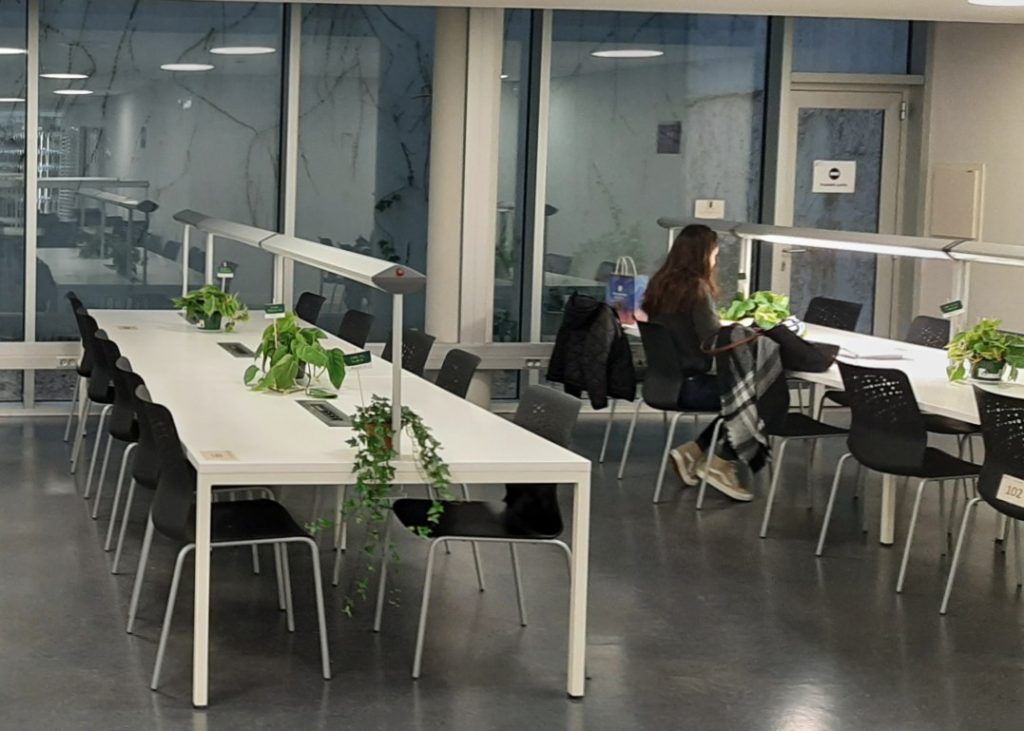
All these activities are part of the Environmental Sustainability and Climate Action Plan 2021-2030 (in catalan) that the University has launched with the intention of rising to the new challenges facing us as a society. The two main objectives of the plan are, on the one hand, to reduce greenhouse gas (GHG) emissions by 60% in 2030 compared to 2005 and, on the other hand, to ensure that 10 % of the green areas of the campuses are devoted to promoting urban biodiversity.
